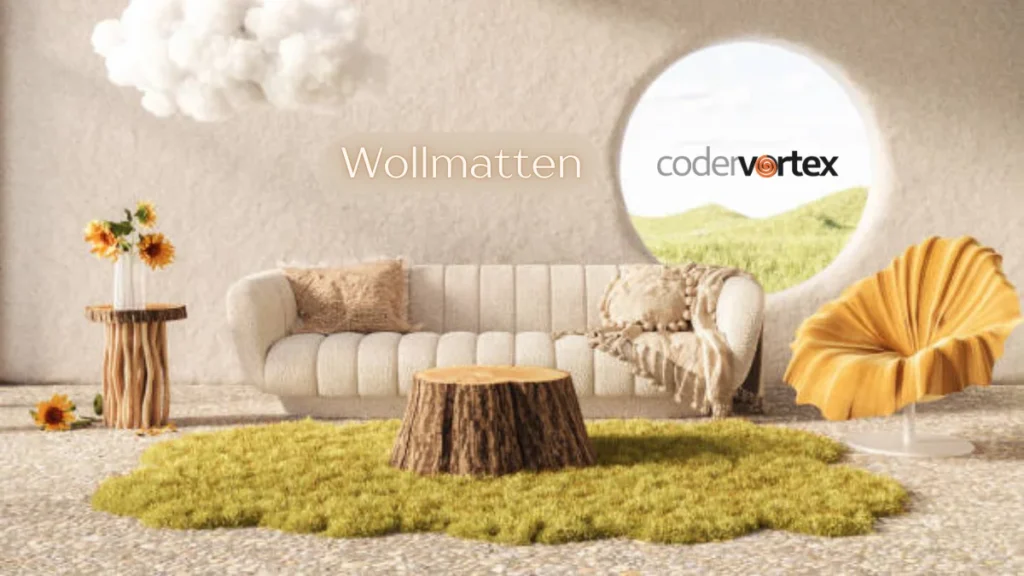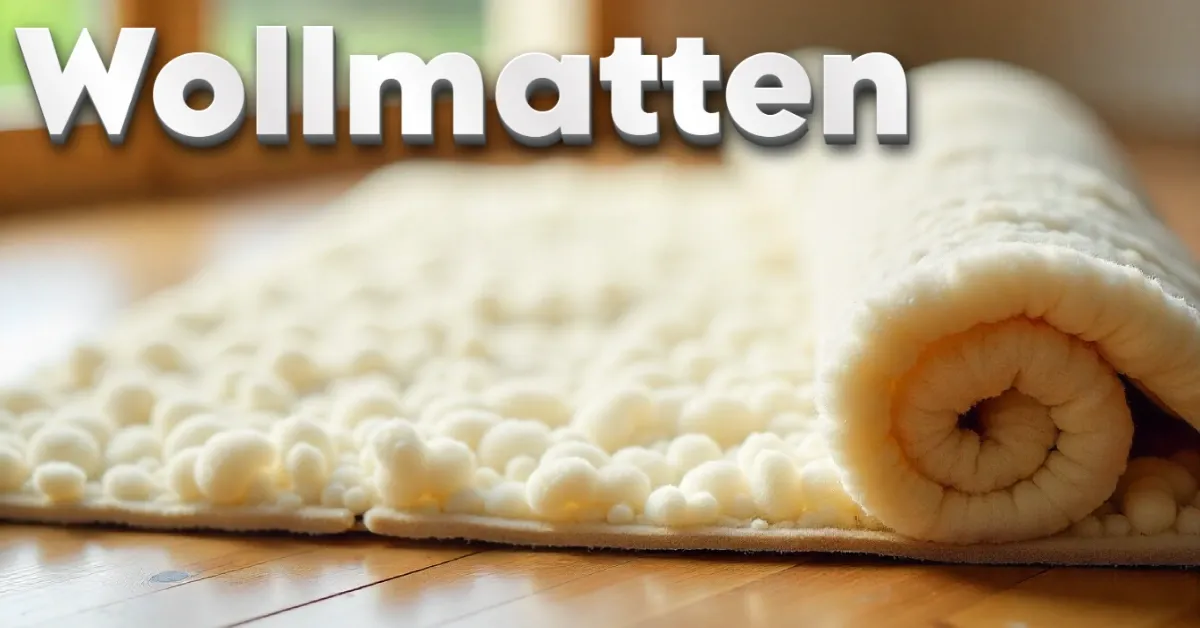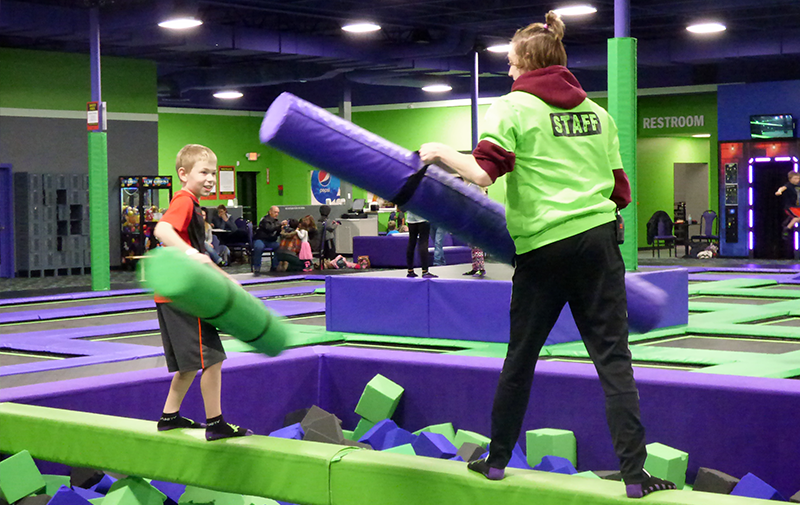Discover the Natural Wonder of Wollmatten
Have you ever looked for a product that is natural, versatile, and incredibly effective? It’s time to get to know wollmatten. These remarkable wool mats are gaining popularity for their wide range of uses, from making your home cozier to helping your garden thrive. Made from one of nature’s most incredible fibers, wool, these mats offer benefits that synthetic materials simply can’t match. In this complete guide, we will explore everything you need to know about wollmatten. We’ll cover what they are, the different types available, their many applications, and how to care for them. Whether you’re a homeowner, a gardener, a pet owner, or a crafter, you’ll soon see why these wool mats are a fantastic addition to your life. Get ready to dive into the world of this amazing, sustainable material.
Key Takeaways
- Wollmatten are natural wool mats offering benefits like insulation, moisture management, and soundproofing.
- They are highly versatile, with applications in home decor, gardening, pet care, fitness, and crafting.
- These mats are an eco-friendly choice as they are made from a renewable resource (sheep’s wool) and are biodegradable.
- When buying, consider factors like GSM, density, and certifications to ensure quality and safety.
- Proper care and maintenance, including regular cleaning and correct storage, can significantly extend the life of your wollmatten.
What Exactly Are Wollmatten?
At its core, a wollmatten is a mat made from sheep’s wool. The term “wollmatten” is German for “wool mats,” and it describes a range of products created by compressing or weaving wool fibers together. Unlike synthetic mats made from plastic or rubber, wollmatten are completely natural. They harness the inherent properties of wool, a material that has been used by humans for thousands of years for its warmth, durability, and comfort. These mats can be thick or thin, soft or firm, depending on how they are manufactured and what their intended use is. The process of creating them often involves felting, where wool fibers are agitated with moisture and heat, causing them to lock together and form a dense, uniform fabric. This process makes the final product strong and resilient, ready for a variety of tasks.
The Amazing Benefits of Using Wollmatten
Choosing wollmatten over synthetic alternatives comes with a host of incredible benefits that stem directly from the natural properties of wool. One of the most significant advantages is thermal insulation. Wool fibers have a natural crimp that traps air, creating an effective barrier against both heat and cold. This makes wool mats excellent for keeping floors warm in the winter and cool in the summer. Another key benefit is moisture management. Wool can absorb up to 30% of its weight in moisture without feeling damp, wicking it away from surfaces and releasing it into the air. This helps prevent mold and mildew growth. Furthermore, wollmatten are naturally flame-resistant, adding a layer of safety to your home. They are also highly durable and can withstand significant wear and tear, making them a long-lasting investment.
Exploring Different Types of Wollmatten
Not all wollmatten are created equal. They come in several different types, each suited for specific purposes. The most common variety is the needle-felt wollmatten. These are made by mechanically interlocking wool fibers using thousands of barbed needles, creating a dense and sturdy mat. This type is perfect for applications requiring durability, such as underlayment for flooring or gardening mulch mats. Another type is the woven wollmatten, which is created on a loom much like a traditional rug. These tend to be more decorative and are often used as area rugs or yoga mats. You can also find blended fiber mats, where wool is mixed with other natural fibers like jute or cotton to enhance certain properties, such as texture or strength. The type you choose will depend entirely on your specific needs, whether it’s for soundproofing a room, providing a comfortable bed for a pet, or adding a stylish touch to your living room.
How Are Wollmatten Made?
The manufacturing process for wollmatten is a fascinating blend of traditional techniques and modern technology. The journey begins with sourcing raw sheep’s wool. After the sheep are shorn, the wool is cleaned thoroughly to remove dirt, grease (lanolin), and vegetable matter. This process is called scouring. Once clean, the wool fibers are carded, which involves passing them through a series of rollers with wire teeth. Carding aligns the fibers into a uniform, fluffy web called a batt.
For a needle-felt wollmatten, these batts are layered to the desired thickness and then passed through a needle loom. Thousands of barbed needles repeatedly punch through the layers, entangling and locking the fibers together to form a dense, non-woven fabric. The density and thickness of the final mat can be precisely controlled during this stage. For woven mats, the carded wool is spun into yarn, which is then woven on a large loom. The final step for all types of wollmatten often involves finishing treatments, such as trimming the edges or applying natural dyes.
Versatile Applications in Your Home
The uses for wollmatten around the house are nearly limitless. Their natural beauty and functional properties make them a perfect fit for any room. As an area rug, a thick, soft wollmatten can add warmth, comfort, and a touch of rustic elegance to a living room or bedroom. They are wonderful underfoot and help to dampen sound, making a space feel more peaceful and quiet. You can also use thinner wollmatten as an underlayment for hardwood or laminate flooring. Placing one beneath your primary flooring adds a layer of insulation, reduces noise from footsteps, and provides a slight cushion that makes floors more comfortable to walk on. In a child’s playroom, a wool mat provides a soft, safe, and non-toxic surface for playing. They are also great as entry mats, trapping dirt and absorbing moisture from shoes to help keep your home cleaner.
Soundproofing with Wool Mats
One of the most effective uses for wollmatten is soundproofing. Wool is a naturally dense and porous material, which makes it excellent at absorbing sound waves. When sound hits a wollmatten, the energy is trapped within the complex network of fibers, reducing echo and reverberation in a room. You can use them as wall panels in a home theater, music studio, or office to create a quieter, more acoustically balanced environment. Simply mounting thick wollmatten panels on walls or even ceilings can make a dramatic difference. They are far more attractive than standard foam acoustic panels and add a warm, natural aesthetic. For more ideas on integrating natural materials into your home design, you might find some inspiration over at https://versaillesblog.com/.
Wollmatten for Yoga and Fitness
For those who practice yoga, Pilates, or other floor-based exercises, a wollmatten can be a game-changer. Standard PVC or rubber yoga mats can feel cold, sticky, and artificial. A wool yoga mat, on the other hand, provides a soft, warm, and breathable surface that connects you to a natural material. The cushioning is gentle on your joints during poses, while the texture provides enough grip for stability. Wool’s ability to manage moisture means that even during a sweaty workout, the mat won’t feel slick or uncomfortable. It helps regulate your body temperature, keeping you comfortable throughout your practice. After your session, the mat is easy to roll up and store. The natural antibacterial properties of wool also help keep the mat fresh and clean with minimal effort, making it a hygienic and luxurious choice for your fitness routine.
Wollmatten in Pet Care
Pet owners are quickly discovering the benefits of using wollmatten for their furry friends. A wool mat makes an ideal pet bed because it is soft, supportive, and incredibly comfortable. Dogs and cats are naturally drawn to the warmth and natural scent of wool. The insulating properties keep your pet warm in the winter and cool in the summer, providing year-round comfort. Wool is also naturally odor-resistant, which is a huge plus for any pet product. The fibers can absorb and neutralize odor-causing bacteria, helping to keep your home smelling fresh. Furthermore, wollmatten are durable enough to withstand scratching and nesting from both cats and dogs. They are easy to clean—dirt and hair can be shaken or vacuumed off, and most mats can be spot-cleaned or gently hand-washed if needed. It’s a healthy, non-toxic bedding option that your pet will love.
Using Wollmatten for Gardening
In the garden, wollmatten serve as a powerful, multi-purpose tool. Used as a mulch mat, a wollmatten placed around the base of plants suppresses weed growth by blocking sunlight. This reduces the need for herbicides and manual weeding. At the same time, the mat helps retain soil moisture by reducing evaporation, meaning you’ll need to water less frequently. As the wool slowly biodegrades over several seasons, it releases valuable nutrients like nitrogen into the soil, acting as a natural fertilizer. Wollmatten also provide insulation for plant roots, protecting them from extreme temperature fluctuations—both frost in the winter and intense heat in the summer. They are particularly useful for young trees, shrubs, and in vegetable gardens. The mats also deter slugs and snails, which dislike crawling over the fibrous texture of wool.
The Buyer’s Guide to Quality Wollmatten
When you’re ready to purchase a wollmatten, there are a few key factors to consider to ensure you get a high-quality product.
- GSM (Grams per Square Meter): This measurement tells you the density and weight of the mat. A higher GSM indicates a thicker, denser, and more durable mat. For high-traffic areas or applications like soundproofing, look for a higher GSM.
- Fiber Source and Purity: Look for mats made from 100% pure new wool. Some mats may be made from recycled wool or blended with synthetics, which can affect performance. Knowing the source of the wool (e.g., Merino, Shetland) can also give you an idea of its softness.
- Certifications: Certifications like OEKO-TEX or Woolmark guarantee that the product has been tested for harmful substances and meets high standards for quality and purity. This is especially important if the mat will be used by children or for yoga.
- Manufacturing Process: A needle-felted wollmatten is generally more durable for functional uses, while a woven one is better for decorative purposes. Understand which type best suits your needs before buying.
|
Feature |
Low-Quality Wollmatten |
High-Quality Wollmatten |
|---|---|---|
|
Material |
Often blended with synthetics or low-grade recycled wool. |
100% pure new wool, often with origin specified. |
|
Density (GSM) |
Low GSM, feels flimsy and light. |
High GSM, feels substantial, dense, and durable. |
|
Feel |
Can feel scratchy or inconsistent in texture. |
Soft, consistent texture, and even thickness. |
|
Certifications |
No certifications listed. |
Certified by OEKO-TEX, Woolmark, or similar. |
|
Durability |
Prone to shedding, flattening, and tearing easily. |
Resists shedding and flattening; highly durable. |
Care and Maintenance Tips
Caring for your wollmatten is simple and will ensure it lasts for many years. For routine cleaning, you can shake the mat out outdoors to remove dust and debris or use a vacuum cleaner with a brush attachment. Because wool is naturally stain-resistant, many spills can be cleaned up easily if you act quickly. Blot the spill immediately with a clean, dry cloth, working from the outside of the spill inward to prevent it from spreading. If a stain sets, you can spot-clean it with a mild soap or a wool-specific cleaner diluted in cool water. Never use hot water or harsh chemical detergents, as they can damage the wool fibers. For a deeper clean, some smaller wollmatten can be hand-washed in a tub of lukewarm water. Gently squeeze the water out—do not wring—and lay it flat to dry away from direct sunlight or heat.
Wollmatten vs. Synthetic Alternatives
When choosing a mat, you might be tempted by synthetic options like foam, rubber, or polyester. While these materials are often cheaper, they lack the unique benefits of wool. Synthetic mats are made from petroleum-based plastics, which have a significant environmental footprint. They do not biodegrade and can release harmful chemicals over their lifespan. In contrast, a wollmatten is made from a renewable resource and is fully biodegradable.
Functionally, wool outperforms synthetics in several ways. It provides superior thermal and acoustic insulation. Its ability to manage moisture is unmatched—foam and rubber mats can trap sweat and moisture, leading to unpleasant odors and bacteria growth. Wool is also naturally flame-resistant, whereas many synthetics are highly flammable unless treated with chemical retardants. While a high-quality wollmatten may have a higher upfront cost, its durability, performance, and eco-friendly properties provide far greater long-term value.
The Eco-Impact of Wollmatten

Choosing a wollmatten is a decision that is good for you and for the planet. Wool is a sustainable and renewable resource. Sheep grow a new fleece every year, and shearing is a necessary part of animal husbandry that keeps the sheep healthy. The production of wollmatten is generally a low-impact process, especially when compared to the chemical-intensive manufacturing of synthetic materials.
At the end of its long life, a wollmatten does not contribute to landfill waste. Since it is a completely natural material, it is 100% biodegradable. When composted or buried in the soil, it will break down and return its nutrients to the earth, enriching the soil. This circular lifecycle makes wool one of the most environmentally friendly fibers available. By opting for wool products, you are supporting farming traditions and making a choice that helps reduce plastic pollution and promotes a healthier ecosystem. It’s a simple way to bring a piece of nature into your home while being a responsible consumer.
Frequently Asked Questions (FAQ)
1. Do wollmatten have a strong smell?
When new, a wollmatten may have a faint, natural, earthy smell of wool, which most people find pleasant. This is due to the natural lanolin in the fibers and typically dissipates within a few days. If the mat gets wet, it may have a stronger “wet wool” smell, which will also go away once it is completely dry.
2. Are wollmatten suitable for people with allergies?
Wool is naturally hypoallergenic and resistant to dust mites, mold, and mildew. Most people are not allergic to wool itself but to the chemicals used to treat it. A high-quality, un-dyed wollmatten with certifications like OEKO-TEX is an excellent choice for allergy sufferers.
3. Will my wollmatten shed a lot?
Some light shedding of fibers is normal for a new wollmatten, especially for thicker, softer varieties. This will decrease over time with use and regular vacuuming. High-quality, densely felted mats will shed significantly less than lower-quality ones.
4. Can I cut a wollmatten to a custom size?
Yes! One of the great advantages of a needle-felt wollmatten is that you can easily cut it to any shape or size using a sharp utility knife or heavy-duty scissors. Because it is a non-woven material, the edges will not fray.
5. How do I fix a flattened spot on my mat?
If a heavy piece of furniture has flattened an area of your wollmatten, you can often revive it. Try spritzing the area lightly with water and then using your fingers or a stiff brush to fluff the fibers back up. A bit of steam from an iron held a few inches above the surface can also help.
Conclusion
From adding comfort and style to your home to improving the health of your garden, wollmatten are a truly remarkable and versatile product. These natural wool mats offer an unbeatable combination of performance, sustainability, and durability. By harnessing the incredible properties of wool, they provide insulation, moisture management, sound absorption, and a safe, non-toxic surface for your family and pets. Whether you are looking for an eco-friendly alternative to synthetic rugs, a supportive yoga mat, or a powerful gardening tool, a wollmatten is an investment that delivers outstanding value. Embrace this natural wonder and discover the many ways it can enhance your life and home.














Post Comment